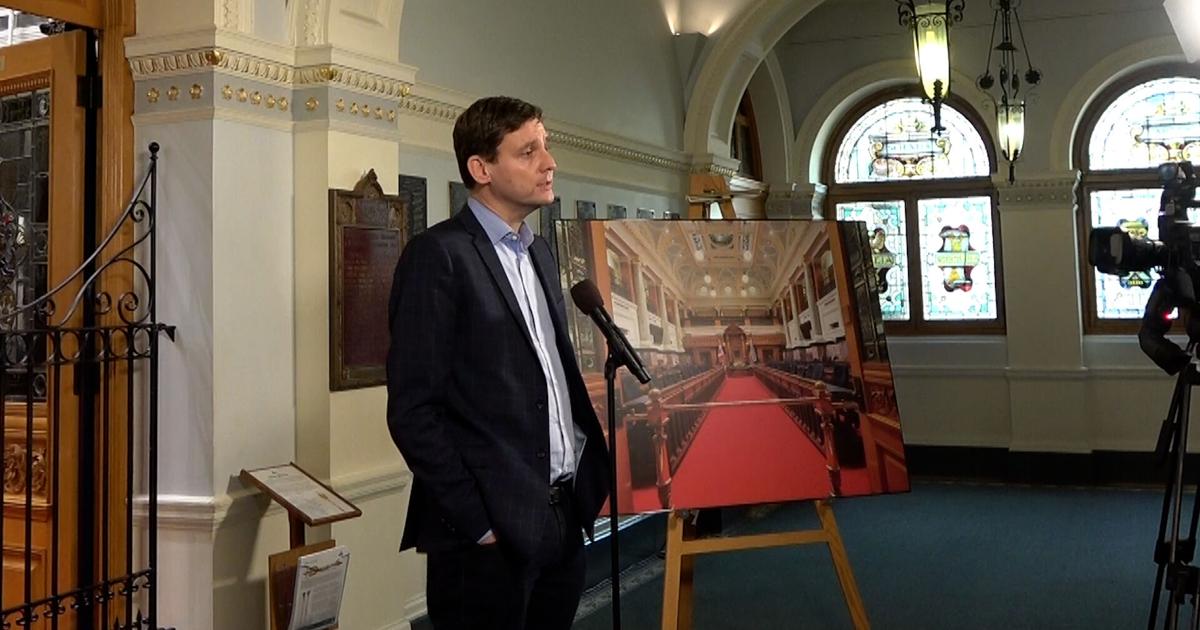News
Which provinces are pushing Canada’s COVID-19 active case count higher than ever?

TORONTO —
The number of active COVID-19 cases in Canada has more than doubled this month, as the total number of Canadians infected by the novel coronavirus since the start of the pandemic nears one per cent of the country’s population.
There were 364,810 confirmed cases of COVID-19 in Canada as of end-of-day Saturday, according to a CTV News tracker, including 61,421 cases that were classified as active – an increase of 113 per cent over the 28,875 cases that were active as of Nov. 1. The current number of active cases is greater than the population of Fredericton, N.B.
Every part of the country has helped contribute to that surge. The Atlantic “bubble” has popped, with New Brunswick being the first Atlantic province to show COVID-19 activity at similar rates to the spring. There have also been significant ramp-ups in virus detections in the North, with Yukon reporting record numbers and Nunavut just starting to fall back from a worrying period that left it with the highest per capita infection rate in Canada.
It’s Central Canada and the West that are carrying the lion’s share of this phase of the pandemic, with the four most populous provinces all reporting record single-day infection totals since Friday.
Ontario and British Columbia set their records on Friday, logging 1,855 and 911 cases of the virus respectively. Alberta and Quebec took their turns on Saturday, with 1,731 new infections recorded in Alberta and 1,480 in Quebec.
All of this activity helped push Canada to a record single-day total of 5,967 new cases on Friday. That number fell to 5,743 on Saturday, albeit without any data from B.C.
Modelling data released by Canada’s chief public health officer, Dr. Theresa Tam, has projected that there could be 10,000 new cases of COVID-19 a day diagnosed in Canada by mid-December if Canadians do not do more to curb their interactions with others.
Dr. Ronald St. John, a former director-general of the Public Health Agency of Canada’s Centre for Emergency Preparedness, told CTV News Channel on Sunday that Canada is on track for that scenario, at which point large-scale lockdowns may be necessary in order to preserve capacity in the health-care system.
“That’s been repeated over and over in country after country after country, and Canada will be no exception,” he said.
THE WESTERN FRONT
While Ontario, Quebec and Alberta are all jockeying for first place in the race for the most infections, adjusting the data for population leaves us with a much different leaderboard.
The recent record-setting numbers in Ontario leave the heavily populated province with a seven-day average of 10.52 new cases per 100,000 residents – lower than any province outside Atlantic Canada.
By this measure, the Prairies are by far Canada’s current COVID-19 hotspot.
Alberta’s seven-day average increased Saturday to 30.91 cases per 100,000 residents, a new high-water mark for that province. Manitoba had been above the 30-per-100,000 line earlier in the week but fell to 29.19 per 100,000 as of Saturday.
Those two provinces are followed by Saskatchewan, which set a record Friday at 22.88 cases per 100,000 and fell back slightly on Saturday. Fourth place on the list is Nunavut – which, at 20.21 cases per 100,000, has cut its rate in half over the past week – and Quebec at 14.65 per 100,000.
To put the worries in Atlantic Canada in perspective, Nova Scotia has the highest rate in that region, at 1.64 cases per 100,000 population. Nonetheless, its government introduced a host of new public health restrictions this week in hard-hit parts of Halifax, closing restaurants for in-person dining, halting recreational and religious gatherings, and restricting retailers to 25 per cent capacity.
Alberta, which has a per capita infection rate nearly 19 times that of Nova Scotia, introduced its own province-wide restrictions one day later. Measures taken there include bans on social gatherings except with those in one’s household and indoor recreational gatherings, as well as capacity limits for religious services.
“When you look at the measures that the government of Alberta has put into place, they are similar to what Ontario and Quebec had in place before that didn’t work,” Dr. Anna Banerji, an infectious disease specialist at the University of Toronto, told CTV News Channel on Sunday.
“There might have to be a reality check coming up in the next little while.”
Meanwhile, in the United States, 42 out of 50 states have higher seven-day average infection rates, per capita, than Alberta, with 22 reporting new COVID-19 cases at double Alberta’s rate.
FEARS IN ONTARIO
Although Ontario is fairing relatively well compared to both other provinces and states – Hawaii is the only state that currently has a lower per capita infection rate – there are still concerns that COVID-19 activity might be enough to overwhelm the province’s health-care system.
The number of COVID-19 patients in Ontario intensive care units is already high enough to jeopardize some scheduled surgeries, and the province’s latest modelling data suggests the situation will only get worse before the end of the year.
The province has been gradually increasing restrictions in various regions based on local virus activity. Dr. Dale Kalina, medical director of infection at the Joseph Brant Hospital in Burlington, Ont., told CTV News Channel on Saturday that it will be “another week, at least” before those changes show up in daily case counts – and that some hospitals are already offloading patients to neighbouring facilities.
“We’re not going to be able to continue to do that if people don’t help us [by following public health measures],” he said.
Source:- CTV News
News
Toronto Sceptres open camp ahead of second PWHL season |

The Toronto Sceptres have opened training camp for the upcoming PWHL season, with a new logo, new colours, new jerseys and a new primary venue in Coca-Cola Coliseum. The team has a lot to look ahead to after a busy off-season and successful inaugural campaign. (Nov. 12, 2024)
News
Major shakeup at Canada Soccer in wake of drone-spying scandal |

After a lengthy independent report on the Summer Olympic drone-spying scandal, Canada Soccer says women’s head coach Bev Priestman, assistant coach Jasmine Mander and analyst Joey Lombardi will not be back with the organization. It found the “practice of conducting surreptitious surveillance of opponents” predated this summer’s Paris Olympics. Former coach John Herdman has yet to give evidence. (Nov. 12, 2024)
News
Eby pays tribute to former B.C. premier John Horgan |

B.C. Premier David Eby says John Horgan was an inspirational leader who guided the province’s New Democrats out of the political wilderness after 16 years in Opposition. Eby says his predecessor as premier, who has died after a third bout with cancer, was known for his compassion for people from all walks of life but also his sharp tongue. (Nov. 12, 2024)
-

 News17 hours ago
News17 hours agoAs Toronto enters its Taylor Swift era, experts say crowd safety depends on planning
-

 News17 hours ago
News17 hours agoCanadanewsmedia news November 12, 2024: Union serves strike notice to Canada Post
-

 News16 hours ago
News16 hours agoFormer CFL commissioner Mark Cohon joins Northern Super League as board chair
-

 News16 hours ago
News16 hours agoWaymo’s robotaxis now open to anyone who wants a driverless ride in Los Angeles
-

 News17 hours ago
News17 hours agoFederal government moves to end port strikes, orders binding arbitration
-

 News17 hours ago
News17 hours agoToronto play ‘The Bidding War’ taps into city’s real estate anxiety
-

 Business16 hours ago
Business16 hours agoTrump campaign promises unlikely to harm entrepreneurship: Shopify CFO
-

 News16 hours ago
News16 hours agoWorld’s largest active volcano Mauna Loa showed telltale warning signs before erupting in 2022





















